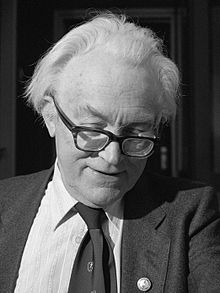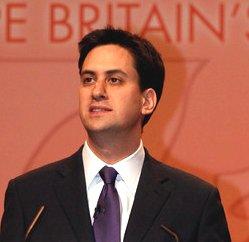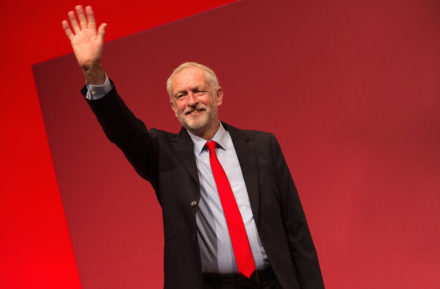
We are now in the season before conference, when ideas are floated to test support before delegates gather.
This annual ritual always throws up both serious and speculative ideas, and this year already there is a big one: whether to elect the leader and deputy leader by giving the power solely to the Parliamentary party – for the first time since 1980.
This idea would be both important and the timing very unusual. Important because unlike the Conservatives who change leaders regularly and eccentrically, Labour leaders once elected; stay elected.
Once we have them, we keep them through thick and thin until they step down. The method of electing them becomes far more important when the probability is that they will be around for a long time and only choose to depart by resigning the position.
It is unusual because the proposal is being made after winning an election. All the previous big constitutional shifts have been in the aftermath of defeat and against a backdrop of recrimination and desperation. The method has been chosen by the dominant faction of the day aimed at locking in its candidates over the long term.
However, history tells us that this very rarely works out quite as intended. The Labour movement can produce knife edge victories and big surprises no matter what the intention of the change agents might have been when they started. At key moments in the last 50 years the constitutional genie has been let out of the bottle with dramatic results.
The birth of Labour’s electoral college
It all began in 1981. Labour’s defeat to Margaret Thatcher in 1979 ignited the left through the Campaign for Labour Party Democracy (CLPD) which was led by the veteran tactician Vladimir Derer and the young operator Jon Lansman. In their drive to radicalise the party, they sought to constrain the power of MPs and drive the influence of CLPs and Trades Unions where they held greater influence.
They pushed for three constitutional changes – mandatory reselection of MPs every Parliament, the conference writing and authorising the manifesto and changing the means of electing the leader and deputy leader from an electorate only of sitting MPs. It argued that the spread of power would mean a more transparent process in which individual MPs would lose their influence over the outcome.

This was tested in 1980 when, after James Callaghan stood down as leader, his deputy Michael Foot of the left and Denis Healey of the centre right fought for the leadership.
In winning, Foot was the last deputy leader of the Labour Party to be elected leader and the last by an electorate consisting solely of MPs. Healey became his deputy.
However, Foot’s victory was undermined by the suspicion that a number of right wing MPs who were planning to defect from the party voted for him to cause maximum damage to Labour. His election reinforced the CLPD demand for an electoral college consisting of MPs but also trade unions and CLPs.
At the dramatic Wembley conference in January 1981, CLPD succeeded in winning. The electoral college was born with the Trade union section having the biggest bloc of votes (40%) over MPs and CLPs (30% each). This was the excuse needed for the breakaway to the nascent SDP to be announced the following day and 28 Labour MPs left to join it.
Tony Benn and the high point of the left
Having won the battle for the mechanism, the left needed to win the war for a successful election. Eight months later, Tony Benn challenged Denis Healey for the deputy leadership at conference in September. It is impossible now to recapture the drama and excitement of that election.
It was assumed the winner would be the next leader and the party could be set on a radically different course. Throughout the summer on 1981 the two candidates campaigned at union conferences, CLP meetings and in the media. This was all totally new.
However, unlike elections in the Parliamentary party, the mathematics of the electoral college meant that the result would depend not just on positive voting for a candidate but on abstentions as well.
A group of Tribunite MPs led by Neil Kinnock refused to vote for Benn. A key union NUPE (National Union of Public Employees) abstained (despite the efforts of its London officer Jeremy Corbyn). On the first ballot Benn won 49.6% over Healey and John Silkin, the Tribunite candidate. On the second ballot Healey won 50.4%. Those voting for Silkin either swung behind Healey or abstained. Benn had got incredibly close but failed and this was to be the high point of the left’s influence until 2015.
CLPD’s creation was now part of the party’s machinery and for 29 years leadership and deputy leadership elections were fairly predictable as the party united around leading candidates.
Kinnock, Smith. Blair and Brown all won easily. The electoral college was amended and broadened to allow parity between three sections – MPs/MEPs, individual members and affiliated organisations but was never really challenged as a mechanism.
And then came 2010.
David v Ed Miliband
As with 1979 Labour had lost an election after a long period in government. There were four candidates from the two wings of New Labour and one – Diane Abbott from the left. 12.5% or 33 of Labour MPs were needed to nominate a candidate. Ed Balls, Andy Burnham and Abbott all got 33 but Abbott only because David Miliband asked some of his supporters to nominate her.
The race quickly became one between David and Ed Miliband who was challenging as a candidate to the left of his brother.
What is remarkable about this election is that David not only led on the first three rounds he also led in the final round by a huge margin in both the section of MP/MEPs with 53.4% and among Labour party members with 54.4%.

Having such broad support would normally have guaranteed a victory but there were a small but sufficient number of MPs who failed to support him. Ed won such a large majority – 59.8% – among the affiliated members/trades unions that he was able to squeak home by the overall margin of 50.7% to David’s 49.3%.
Two key lessons came out of this result; the nominations process was a critical part of the game and setting the number of MPs needed to be nominated would be significant in the future.
For the first time a candidate had won by focussing so much on one of the three sections of the college that he could swamp the result and overcome the preference of both elected representatives and members.
One Member One Vote and the election of Jeremy Corbyn
It set up the attack on Ed that he was a creature of the unions and when he later clashed with Len McCluskey of Unite he wanted to demonstrate independence by replacing the electoral college to One Member One Vote (OMOV).
It was hoped that opening up the party to a new influx of paying members would reduce union influence and create a ‘mass party’. Ray Collins produced a report that recommended a new £3 membership in which you could join the Labour party and elect a leader.
However, he also recommended that to balance out the risk of a elected leader who had little support among the Parliamentary party there should be a high bar for nominations. He proposed 25% of Labour MPs.
This was reduced to 20% and then 15% by Ed Miliband after pressure from Blairite members of his shadow cabinet who were worried they would not have a candidate in any subsequent election.

The supreme irony is that If it were not for this the left would not have been about to get their candidate – the unlikely Jeremy Corbyn – on the ballot.
We know the result. The youthful Jon Lansman of 1979 had become the grizzled veteran 0f 2015 and ran campaign aimed at enticing new £3 members and unions to back Corbyn. This was a hugely successful and unexpected victory in both 2015 (59.5% of the vote) and 2016 (61.85%) which would never have happened under the old electoral college.
This same system then elected Keir Starmer (56.2%) in 2020. The system had elected two very different candidates by large majorities based on the brilliance of their campaigns.
You don’t always get what you wish for
So what does any of this tell us?
Being deputy leader does not pave the way to the leadership – only Clement Attlee in 1935 and Foot in 1980 have risen from deputy to leader and both were elected only by MPs.
The electoral college could throw up surprising results by clever management of the voting of individual sections. It was not a fool proof system. Both it and OMOV could produce results in 2010 and 2015 disliked by the majority of MPs.
Changing the system does not guarantee the result wanted by its creators. The left believed their creation would see Benn win, David Miliband looked certain in 2010, Jeremy Corbyn was regarded even by himself as a totally unlikely winner. What wins is the best campaign with a true understanding of the system of the day.
If it turns out that Labour returns to an MP-only electorate, it is possible that they would be as sophisticated and unmanageable a group who could produce a result as unexpected as any electoral college. The lesson of history is the mechanism alone never guarantees the outcome. That comes down to politics.
READ MORE: Sign up to our must-read daily briefing email on all things Labour
SHARE: If you have anything to share that we should be looking into or publishing about this story – or any other topic involving Labour– contact us (strictly anonymously if you wish) at [email protected].
SUBSCRIBE: Sign up to LabourList’s morning email here for the best briefing on everything Labour, every weekday morning.
DONATE: If you value our work, please donate to become one of our supporters here and help sustain and expand our coverage.
PARTNER: If you or your organisation might be interested in partnering with us on sponsored events or content, email [email protected].




More from LabourList
‘Forget New Year – for Labour, discipline done well has to be their year-long resolution’
EXCLUSIVE: New Year Message from Anna Turley
Which Labour ministers did the most broadcast interviews in 2025?